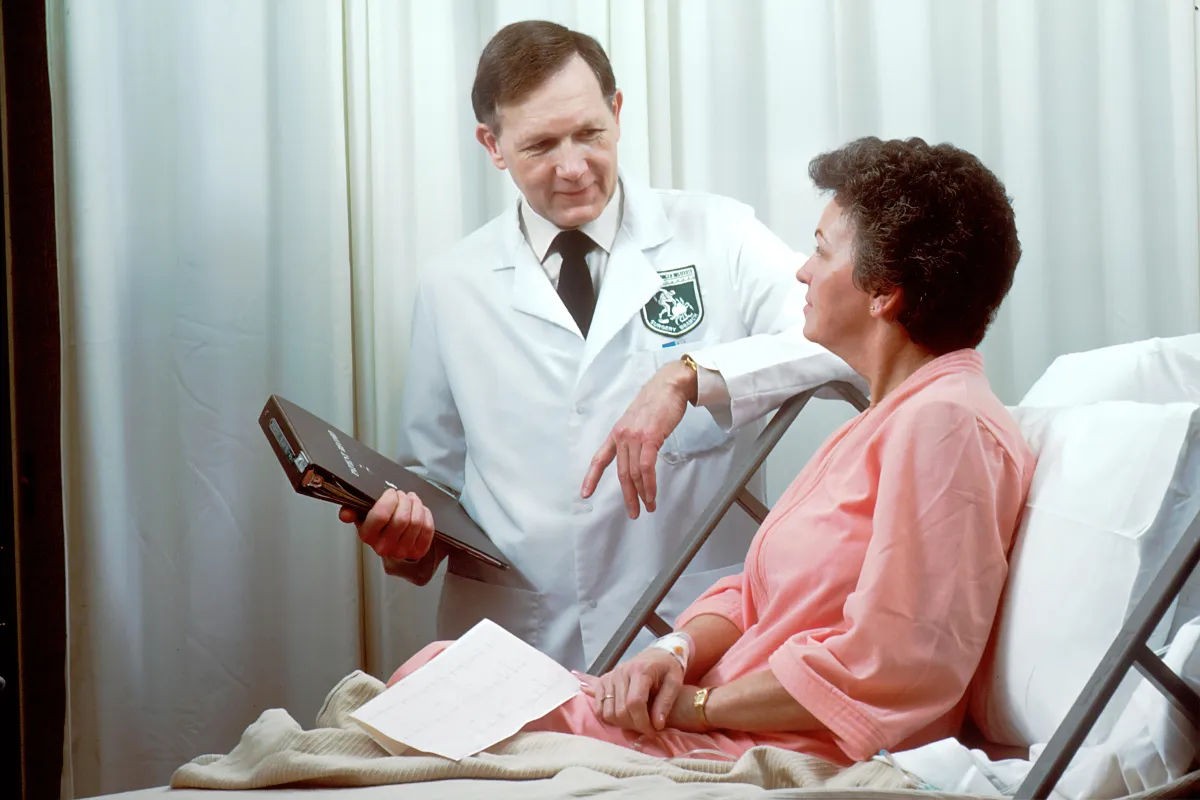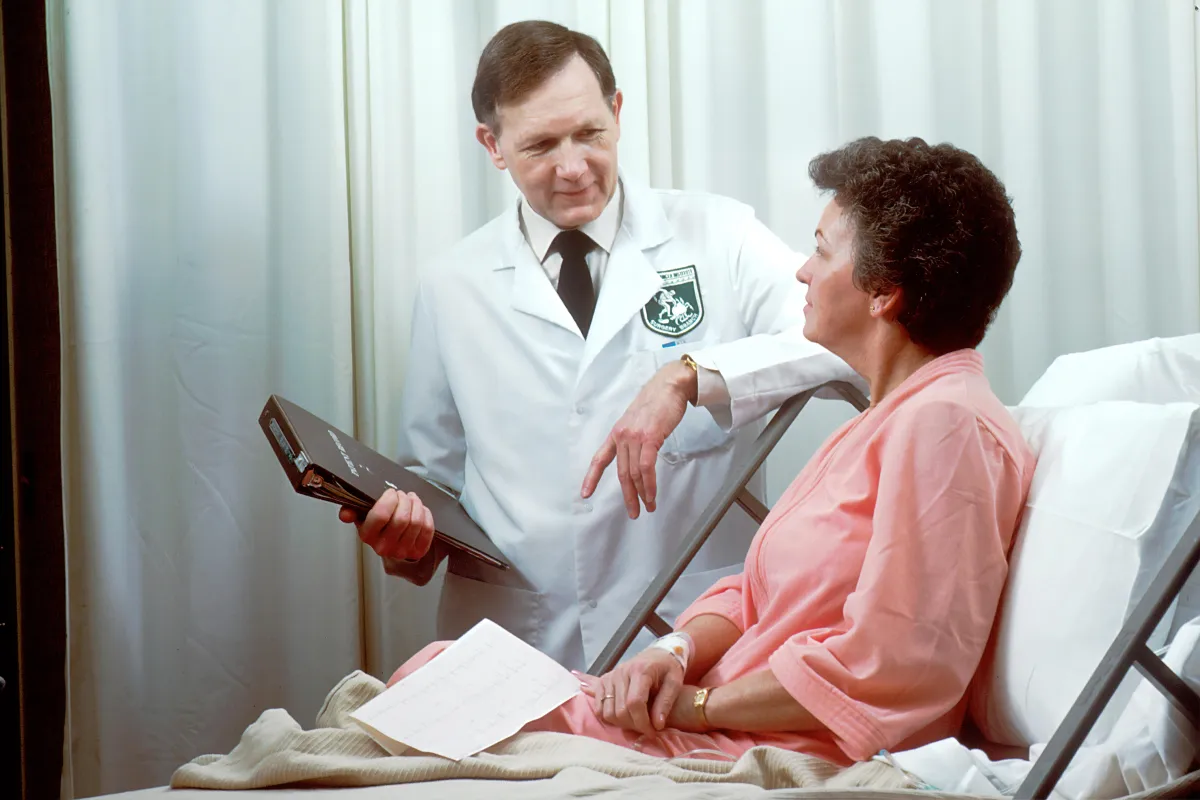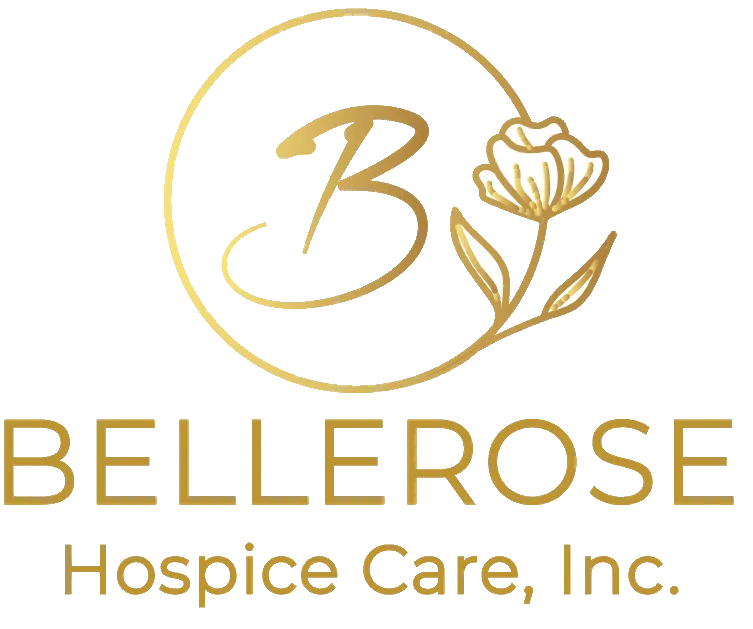Follow Us:
Fax: 661-360-8880
Our Mission
Our Mission is to affirm the cycle of living by enhancing quality for those at the end of life. The Vienna Hospice and Palliative Care standard is to compassionately care for patients, families, and to empower those we serve to have quality of options that afford them comfort, dignity, and support.




Hospice & Palliative Care Essentials
Contemplating the final stages of life can be a challenging task, whether you are preparing for the future or currently dealing with a severe illness.
At Bellerose, we offer empathetic hospice care to individuals with life-limiting illnesses. Our dedicated palliative care team focuses on managing symptoms, alleviating pain, and addressing quality-of-life concerns for patients confronting chronic, intricate, or severe health conditions.
Dive into a comprehensive array of supportive resources provided by Bellerose to learn more about our services.



Essential Information
Essential Information About Hospice Care: 10 Key Points
Understanding hospice care can be challenging, as it involves a unique approach to supporting individuals nearing the end of life. Here are ten important aspects of hospice care:
1. Individualized Care: Hospice develops personalized care plans that center on each patient's specific goals and desires.
2. Symptom and Pain Management: One of the primary focuses of hospice care is effectively managing symptoms and alleviating pain for patients.
3. Enhancing Quality of Life: Hospice aims to improve the overall quality of life for patients during their remaining time.
4. Emphasizing Time Together: Hospice encourages patients and their families to cherish and make the most of their time spent together.
5. Inclusive Approach: At Vienna, hospice care is designed to cater to the diverse needs of patients facing various advanced illnesses, medical conditions, and accompanying symptoms.
6. Eligibility and Transition: Once a patient is deemed eligible for hospice by their physician, the transition to hospice services can begin with the agreement of the patient or their designated healthcare decision-maker.
7. Shifting Focus: Hospice services involve a shift from a curative focus to a more comprehensive approach to end-of-life care.
8. Patient-Centered Approach: The entire hospice experience is centered around the patient's comfort, dignity, and preferences.
9. Support for Families: Hospice care not only supports patients but also provides assistance and guidance to their families during this difficult time.
10. Informed Decision-Making: Whether you are a patient, family member, or healthcare professional treating patients with advanced illnesses, having accurate information about hospice services can aid in making well-informed decisions about the appropriateness of hospice care.
Important Facts About Hospice Care
These are some of the most important facts you should know about hospice care:
Hospice is for people with advanced illnesses. Hospice provides symptom and pain management for patients with serious illness, no matter their age, culture, beliefs, or cause of illness.
Hospice can happen anywhere. Hospice is a service that comes to the patient in the place they prefer to be for end-of-life care. Patients at home feel better surrounded by the faces and things they know and love.
Hospice is a choice. Patients can leave, or “revoke their hospice status,” at any time for any reason. Patients can also come back to hospice at any time, as long as they meet hospice eligibility guidelines.
Patients can keep taking some medicines while in hospice. Hospice patients are prescribed medicines that manage the symptoms of their advanced illness and improve quality of life.
Hospice gives medicines as needed to help with symptoms. Hospice doctors try to give just enough medicine to manage symptoms and ease pain.
Family or friends provide care with support from the hospice team. Family or friends are a hospice patient’s primary caregivers, supported and trained by an expert team that makes regular, scheduled visits. For patients who live in assisted living communities and nursing homes, the hospice team works together with the facility staff.
There is no limit to the time a patient can be on hospice. Hospice is for patients who have 6 months or less to live according to a doctor, and it can be extended when needed. In surveys, family members often say, “we wish we had known about hospice sooner.”
Hospice provides home medical equipment and supplies related to the cause of the illness. This includes shower chairs, oxygen tanks, hospital beds, toileting supplies, and more.
Hospice supports the family. After a patient passes, hospice addresses emotional and spiritual pain suffered by loved ones for more than a year.
Most hospice patients do not have any out-of-pocket expenses. Medicare Part A covers up to 100% of the cost of hospice care related to a hospice-eligible patient’s illness, with no deductible or copayment. Private or employer-provided health coverage can vary. Check with your insurance provider for details about hospice eligibility, coverage, and out-of-pocket expenses. Medicaid provides hospice coverage, but it varies by state.
Make Advanced Plans
Hospice care provides the most meaningful improvement to quality of life when it begins sooner in a patient’s disease process rather than later. Vienna recommends these conversations begin as soon as a serious diagnosis is made. Patients can ensure that they receive the care they want—and when they want it—by having early and ongoing discussions about their care goals and preferences with their family, physicians, or facility staff.
Physicians can help patients understand their options and identify their preferences during advance care planning sessions and goals-of-care consultations. These Medicare-reimbursed discussions result in advance directives, medically binding documents that indicate how a patient should be treated, under what circumstances they should be resuscitated, who can make medical decisions on their behalf, and more.
Everyone over the age of 18 should have an advance directive to maintain control over their care in case they become unable to speak for themselves. Advance directives include living wills, durable/medical powers of attorney, a Five Wishes document, physician/medical orders for life-sustaining treatment, and other important documents.
Inquiries for Hospice Providers
When contemplating hospice care for yourself or a loved one, gaining a clear understanding of a potential provider's capabilities, track record, and approach is vital to making a confident care decision. These questions can help determine if a provider is well-suited for a patient's needs:
1. Coverage and Financing:
- How are hospice costs covered? Do you accept Medicare, Medicaid, VA benefits, and private insurance?
2. Levels of Care:
- What levels of care do you provide, and how frequently will care team members visit the patient at home?
3. Admissions Process:
- What is the process for admission, and how soon can care begin?
4. Emergency Support:
- What measures are in place for handling emergencies or episodes of aggressive symptoms? Do you offer 24/7 support?
5. Managing Complex Symptoms:
- Can you effectively manage complex symptoms at home? Are specialized services available for respiratory disease, dementia, cancer, heart disease, sepsis, HIV/AIDS, etc.?
6. Population-Specific Care:
- Do you offer care tailored to specific populations, such as veterans, LGBTQ patients, religious minorities, etc.? Can you accommodate and honor specific religious or cultural traditions?
Bellerose's Commitment to Your Hospice Care
At Bellerose, we embrace a fundamental value: "Patients and families come first." Our comprehensive range of services is meticulously designed to envelop patients, families, and caregivers with unwavering support, enhancing quality of life, managing symptoms and pain, and ensuring comfort and dignity throughout one of life's most challenging yet meaningful periods.
Once a patient is ready to explore hospice care, we conduct eligibility assessments promptly within 24 hours. If suitable, we initiate an immediate transition to our services, day or night, even on holidays and weekends—our availability remains constant. We believe in being just a phone call away to provide clinical support for patients, families, and caregivers.
Each patient is assigned a dedicated interdisciplinary care team at Bellerose, crafting an individualized care plan that revolves around their unique needs, goals, and preferences. This compassionate team comprises a physician, nurse, aide, social worker, chaplain, volunteer, bereavement counselor, and other specialists. They make regular visits to address the patient's clinical, psychosocial, and spiritual concerns, customizing visit frequencies according to each patient and family's requirements.
In the event of the patient's passing, we offer ample space and support for the family to process their loved one's departure. Our spiritual staff and care team members are available to assist with end-of-life rituals, funeral arrangements, and the challenges of grief.
Even after the patient's passing, Bellerose's bereavement specialists extend their help for at least 13 months, guiding the family through their loss with personal check-ins, grief support groups, and other practical measures. Our commitment to care endures beyond the patient's journey, ensuring that families find the comfort and support they need during this difficult time.

Understanding Hospice and Morphine: Empowering Knowledge
The word "hospice" and the term "morphine" can evoke fear until you delve deeper into their true significance.
Morphine serves as a cornerstone of pain relief, offering comfort for various conditions ranging from childbirth to advanced cancer, whether the patient is expected to fully recover or is under hospice care.
However, patients and caregivers might feel apprehensive when they hear the word "morphine," fearing that it indicates a sense of abandonment or heavy sedation leading to death. Even physicians, not accustomed to regularly prescribing advanced pain medications, can be hesitant about using morphine.
It's essential for your doctor to consult with a palliative care physician regarding pain management, especially in cancer care.
Hospice and palliative care physicians possess both the expertise and experience in opiate-based medications to swiftly control their patients' pain while utilizing the minimum required dosage. They carefully "titrate" the medication, closely monitoring each patient's dosage and symptoms to achieve optimal pain control with minimal side effects.
Living Pain-Free is Possible
Living with pain, regardless of the life stage, is not necessary. Almost all types of pain can be alleviated with appropriate medications. By reducing pain to a tolerable level, individuals can eat, sleep, stay mentally alert, and maintain a sense of independence, dignity, and self-care. Ultimately, morphine can significantly improve one's quality of life.
Opiates, available in oral or intravenous forms, encompass morphine, codeine, hydrocodone, oxycodone, hydromorphone, and others. These substances are derived from opium poppies. On the other hand, "opioids" are manufactured drugs that replicate the effects of natural opiates. Both types of medications, when prescribed and used correctly, are potent, safe, and effective pain relievers.
Facts About Hospice Care
Debunking Myths and Revealing Facts about Hospice Care
Let's address some common misconceptions about hospice care and unveil the facts:
1. Hospice is not a place; it's a service provided wherever the patient calls home, whether it's a private residence, assisted living community, nursing home, or even some hospitals with dedicated hospice beds.
2. Loved ones and relatives play an integral role in the care team. The interdisciplinary team includes family caregivers, physicians, nurses, social workers, chaplains, hospice aides, bereavement specialists, and volunteers. Families actively participate in the patient's care plan.
3. Hospice is not a last resort; it's a valuable resource for comprehensive pain control, anxiety reduction, emotional and spiritual support, and improved quality of life for terminally ill individuals and their families.
4. Hospice has no religious affiliation and provides spiritual counselors from various faiths and perspectives, respecting all cultures and beliefs.
5. Hospice is not exclusive to cancer patients; it's available to anyone with a terminal illness, such as heart disease, COPD, liver disease, kidney failure, stroke, ALS, Alzheimer's disease, multiple sclerosis, AIDS, or any life-limiting condition.
6. Hospice care is usually more cost-effective than conventional care during the last six months of life. It's an all-inclusive benefit covered by Medicare, Medicaid, Medi-Cal, and most private insurance
companies.
7. A patient's personal doctor can be part of the hospice care team, working collaboratively with hospice physicians to ensure the patient's comfort.
8. Hospice does not withhold medications or treatments; it utilizes state-of-the-art medications and palliative treatments to provide relief and comfort.
9. Families are not kept from the hospice patient; on the contrary, hospice professionals believe that including family members, even children, in the dying process fosters a caring environment and helps address their fears.
10. Hospice is not a sign of failure; it's a compassionate mode of medical therapy that focuses on symptom management, pain control, and overall emotional and spiritual well-being.
11. Hospice does not hasten death; its goal is to enhance the patient's quality of life in their final months, weeks, and days.
12. Hospice is not euthanasia or physician-assisted death. Instead, it supports patients in living comfortably and with dignity until their natural conclusion.
13. Morphine prescribed in hospice does not cause premature death. Hospice physicians administer morphine in carefully calculated doses to alleviate pain and improve the patient's quality of life.
14. Hospice may withhold nutrition and hydration at some point in the dying process, considering the body's natural progression and the patient's ability to process foods and fluids.
15. Artificial nutrition and hydration may not necessarily benefit the hospice patient and are carefully evaluated by specially trained hospice physicians to ensure appropriate intervention.
Understanding the truths behind these myths helps individuals and their families make informed decisions about hospice care, emphasizing comfort, dignity, and support in the final stages of life.
A Comprehensive Glossary: Understanding Hospice & Palliative Care
To comprehend how Bellerose can assist you or your loved one, it's essential to familiarize yourself with hospice and palliative care terms. This glossary provides explanations for common terms used in these fields:
Advance care planning: Making decisions about the care you desire when you can no longer speak for yourself, including creating a living will and appointing a healthcare surrogate.
Advance directive: A document outlining your healthcare preferences if you become seriously ill and unable to communicate your wishes.
Anticipatory grief: Mourning the impending loss of a loved one, often experienced when the patient is terminally ill.
Bereavement: The period of grief following the death of a loved one.
Care transition: The shift in a patient's care, such as from hospital to home or from curative care to hospice care, requiring careful planning and communication.
Caregiver burnout: Feelings of depression, exhaustion, and anger resulting from the strain of caring for a loved one without adequate support.
Case management: Professional coordination of services to benefit a client, particularly relevant in healthcare settings when transitioning patients between care facilities.
Chaplain: A religious or lay person providing spiritual support in various organizations, including hospices.
Continuous care: One of the four levels of care under the Medicare hospice benefit, involving up to 24 hours of clinical care at home until symptoms are controlled.
Culturally competent care: Tailoring healthcare to meet patients' diverse values, beliefs, and social, cultural, and language needs.
Curative care: Medical treatments aimed at curing a disease.
Diagnosis: Determining the specific disease or condition explaining a person's symptoms.
Difference between hospice and palliative care: Palliative care encompasses all comfort-focused care, while hospice care is a subcategory designed for terminally ill patients who opt against curative treatments.
DNR (Do Not Resuscitate): A written order, placed in a patient's records by a physician at their request, instructing medical staff not to revive the patient if their heartbeat or breathing stops.
Dysphagia: Difficulty swallowing.
Dyspnea: Labored or difficult breathing.
Edema: Excess fluid in body cavities or under the skin, causing swelling and discomfort.
Election of hospice: Choosing to enter hospice care and signing the necessary paperwork.
End-of-life care: See hospice care.
Family caregiver: Someone providing physical and emotional care to an ill or disabled loved one at home.
Four levels of care: Medicare hospice benefit mandates four levels of care: routine home care, continuous care, inpatient care, and respite care.
Free-standing hospice: A hospice facility, typically freestanding, exclusively dedicated to end-of-life care and supporting patients and their families.
GIP (General Inpatient Care): One of the four levels of care mandated by the Medicare hospice benefit, providing around-the-clock care in a healthcare facility until symptoms are controlled.
Grief: Profound sadness experienced after the death of a loved one.
Holistic services: Special treatments, such as music therapy, massage, pet visits, reiki, and acupuncture, addressing the whole patient's well-being, not just their disease.
Home hospice care: See routine home care.
Home medical equipment: Supplies and equipment supporting a patient's unique needs at home, such as hospital beds, wheelchairs, oxygen delivery systems, etc.
Homelike setting: A healthcare environment emphasizing comfort and aesthetics, designed to be less clinical than traditional hospital rooms.
Hospice: A healthcare organization providing comfort-focused care for terminally ill patients, emphasizing quality of life over curative treatments.
Hospice aide: A certified nursing assistant offering personal care and assistance to patients near the end of life.
Hospice care team: A group of professional caregivers, including RNs, physicians, social workers, chaplains, hospice aides, bereavement specialists, and volunteers, working together to provide comprehensive care.
Hospice care: Comfort care, aimed at pain and symptom management, enabling terminally ill patients to live fully each day.
Hospice eligibility: Guidelines determining a patient's qualification for the Medicare hospice benefit, usually requiring two physicians' certification of a life expectancy of fewer than six months.
Hospice house: A standalone building designed for end-of-life care and support for patients and families.
Hospice volunteers: Community members dedicating their time to perform tasks for a hospice, contributing to patient care and other services.
IDT (Interdisciplinary Team): A team of professional caregivers with various specialties collaborating to provide comprehensive patient care.
Inpatient care: One of the four levels of care under the Medicare hospice benefit, providing continuous around-the-clock care in a healthcare facility when symptoms cannot be managed at home.
Inpatient unit: A healthcare facility area exclusively designated for end-of-life care and supporting patients and families.
Interdisciplinary team: A group of professional caregivers with different specialties working together to provide holistic patient care.
LGBTQ: Acronym for individuals who identify as lesbian, gay, bisexual, transgender, or queer/questioning.
Living will: A document specifying medical treatment preferences for individuals with terminal illnesses while they are still alive.
Medicare hospice benefit: A Medicare service offering free medical and psycho-social care to patients with a prognosis of six months or less to live.
Palliative care: Comfort-focused care aimed at reducing the severity of a disease or its symptoms without curing the underlying condition.
POC (Plan of Care): A document created by the hospice team, outlining the necessary services, providers, frequency, and expected results.
Power of attorney (POA) for healthcare: A document designating someone to make healthcare decisions on your behalf if you become unable to communicate.
Primary care physician (PCP): The personal physician responsible for a patient's overall care and referrals to specialists when necessary.
PRN: Instructions to take medication as needed.
Prognosis: The expected course of a disease or illness.
Recertification: Document confirming a patient's continued eligibility for hospice services beyond the initial certification period.
Referral: A healthcare professional's suggestion that a patient might be hospice eligible, initiating an evaluation and discussion leading to hospice admission.
Respite care: One of the four levels of care under the Medicare hospice benefit, providing up to five days of inpatient care to give rest
Four Types of Hospice Care at Bellerose
Bellerose is committed to providing comprehensive care to our patients, and we offer four distinct levels of care in alignment with the Medicare Hospice Benefit:
1. Routine Home Care: The majority of hospice care takes place at the patient's chosen residence, whether it's a private home, nursing facility, or assisted living facility.
2. Continuous Home Care (Intensive Comfort Care®): When necessary, we provide acute symptom management in the patient's home, with hospice staff available in shifts up to 24 hours a day. This service helps the patient avoid hospitalization.
3. Inpatient Care: If a patient's needs cannot be effectively managed at home, we offer general inpatient beds in local facilities or proprietary Bellerose inpatient hospice units. Our team provides around-the-clock hospice care to address uncontrolled symptoms until the patient can return home.
4. Respite Care: For a maximum of five consecutive days and nights, we offer respite care to provide a brief break for the patient's primary caregiver. During this time, the hospice patient is admitted to an inpatient setting without meeting the full criteria for continuous inpatient pain and symptom management.
Specialized Care Services at Bellerose
At Bellerose, we strive to deliver the highest quality of care to our patients and their families. As part of this commitment, we offer specialized care services, which include:
1. Veterans Care: We understand that veterans have unique needs at the end of life, and our staff members undergo specialized training to provide tailored care. Bellerose is proud to be a certified We Honor Veterans provider.
2. Music Therapy: Music, in its various forms, can address emotional, cognitive, and social needs of patients, and we utilize music therapy as a valuable component of our care.
3. Pet Visits: Many of our hospice locations have pet volunteers with screened, friendly pets that visit patients and provide comfort. Additionally, our inpatient hospice units allow family pets to visit as well.
At Bellerose, our goal is to ensure that every patient and family receives personalized and compassionate care, tailored to their unique needs and preferences.
Empowering Patients and Families at Bellerose Hospice
At Bellerose, we firmly believe in placing the patient and their family at the heart of our care. At Bellerose, "The patient and family are always at the center of our care."
This philosophy means that the decisions rest with the patient and their family. They are the ones in the driver's seat, and our role at Bellerose is to provide unwavering support throughout their journey.
A Compassionate Team by Your Side
The Bellerose hospice team comprises a group of dedicated professionals, all working in unison to serve the best interests of the patient and their family:
1. Nurse: Our skilled nurses assess and manage pain, offering hands-on care to ensure comfort and well-being.
2. Social Worker: Providing emotional and community support, our social workers also assist with financial matters and future planning.
3. Physician: Collaborating closely with the patient's primary physician, our doctors consult on pain and symptom management, making house calls when needed.
4. Hospice Aide: Our compassionate hospice aides offer assistance with personal care, such as bathing and mouth care, as well as light housekeeping.
5. Chaplain: Our chaplains are available to provide spiritual support, respecting and catering to the patient's beliefs.
6. Volunteer: Volunteers play a crucial role by offering support in various ways, lending a helping hand wherever needed.
7. Bereavement Specialist: For grief and loss counseling, our bereavement specialists are there to provide solace and understanding.
Personalized Care on Your Terms
Our team members typically visit one at a time, always adhering to the schedule chosen by the patient and their family. We are here to offer assistance and guidance whenever it's needed.
At Bellerose Hospice, our commitment is unwavering: the patient and family remain in control throughout their journey, and we stand by their side, providing compassionate care and support every step of the way.
Patient Improvement and Hospice Care: Explained
Can a patient's health improve while on hospice care? Absolutely. It is not uncommon for patients to experience improvements in their health for various reasons while receiving hospice services. These improvements can arise from factors such as proper nutrition, adjustments to medications, increased social interactions, consistent medical and personal attention, and more.
Hospice care is a Medicare benefit that belongs to the patient, and individuals enter hospice because they qualify for this benefit and choose to access it willingly.
In some cases, if a patient's condition shows marked improvement, the doctor may reevaluate the initial prognosis of six months. If the patient's physician believes they will live beyond six months, hospice care can be discontinued.
However, if the patient's condition later starts to deteriorate, the doctor can reassess the situation. If the patient remains eligible for hospice care, they can elect to resume hospice services.
Is it possible for a patient to decide to stop hospice care? Absolutely. Patients have the right to choose to discontinue hospice services without requiring a doctor's consent. This process is known as "revoking" hospice.
At times, patients may decide to revoke hospice services to give curative treatments another chance. Upon revoking hospice, they can opt for surgery or resume curative efforts. Some patients may also choose to transfer to another hospice. In any scenario, hospice care is always the patient's choice.
When a patient revokes hospice services, it also means relinquishing any benefits they may have been receiving through the Medicare hospice benefit, such as home medical equipment and supplies, holistic or therapeutic services, and home visits.
Can a hospice decide to discharge a patient? Yes. If the hospice determines that the patient is no longer terminally ill with a prognosis of six months or less, they must discharge the patient from their care.
Other reasons for patient discharge from hospice may include the death of the patient, the patient revoking the hospice benefit, the patient moving or transferring out of the hospice's service area, or discharge for cause, which may result from disruptive or abusive behavior.
It's essential to remember that hospice care is patient-centered, and patients and families have the ultimate say in their care. If, for any reason, they decide it is in their best interests to stop hospice care, their hospice provider will respect their decision and welcome them back if they choose to return in the future.
Understanding the Distinctions: Home Health, Hospice, and Palliative Care
As a leading provider of hospice care services, Bellerose specializes in end-of-life care, bringing comfort and support to patients wherever they call home. We often receive inquiries about how hospice services compare to home health, as both are Medicare-funded home services. To make the right choice in care, it's essential for patients, family members, and caregivers to comprehend the similarities and differences between the two.
Home Health vs. Hospice Care: The Distinctions
While home health care and hospice care share some similarities, they cater to distinct patients with unique needs and goals.
Hospice Care:
Hospice care provides comfort to patients with advanced illnesses when curative treatments are no longer effective or preferred. It is focused on enhancing the quality of life for patients with a prognosis of six months or less if the disease follows its natural course, as certified by a physician.
What to Expect:
Hospice care is delivered wherever the patient calls home, which could be a private residence, nursing home, assisted living community, or residential care facility for the elderly. An interdisciplinary team of hospice experts, including nurses, aides, physicians, chaplains, social workers, volunteers, and bereavement counselors, provides daily care and compassionate end-of-life support.
In addition to routine hospice care at home, three other levels of care are mandated by the Medicare
Hospice Benefit:
- Continuous care (known as Intensive Comfort Care® at Bellerose) involves around-the-clock attendance by a nurse or hospice aide to manage acute symptom flare-ups per Medicare guidelines.
- Inpatient care provides temporary care in an inpatient hospice unit or hospital bed until symptoms are under control and the patient can return home.
- Respite care offers temporary inpatient care in a Medicare-certified facility to give family caregivers a break of up to 5 days and nights to prevent burnout.
Home Health Care:
Home health care provides intermittent skilled nursing care, physical therapy, speech-language pathology services, or continued occupational services, as prescribed by a doctor. It is typically prescribed for patients recovering from surgery or injury or those with chronic conditions.
What to Expect:
For a patient to receive Medicare benefits for home health services, they must be homebound. The duration of home health services depends on the patient's care plan and goals. Unlike hospice, home health care is curative in nature, aiming to help patients recover or improve functionality.
Patients receiving home health care may have out-of-pocket expenses related to medications, supplies, and equipment. Additionally, home health services do not cover inpatient stays if symptoms escalate and become unmanageable at home.
When Home Health Becomes Hospice:
As an illness progresses, a home health patient may become eligible for hospice care. If you notice signs of decline while receiving home health care, such as significant weight loss, increased dependency on others, or difficulty breathing, discussing hospice eligibility with your doctor can help relieve symptom burdens and enhance quality of life.
Similarities Between Home Health and Hospice:
Despite their differences, home health and hospice share similarities, including:
- Provision of care wherever the patient calls home
- A doctor's order based on eligibility as a prerequisite for both types of care
- Coverage by Medicare, Medicaid, the Veterans Administration, and many private insurance companies
- Assistance with daily living activities, such as bathing and dressing
- Cost-effectiveness compared to hospital or facility care
- Continuation based on physician certification and continued eligibility
Understanding Palliative Care:
Palliative care, a board-certified medical specialty in the US since 2006, focuses on providing comfort, symptom management, and pain relief. It has been practiced for centuries and aims to make a disease or its symptoms less severe or unpleasant without removing the cause.
Palliative care is often provided in the context of serious illnesses, addressing physical, emotional, and psychosocial needs to improve the patient's quality of life. It complements curative treatments and offers support for chronic, progressive pulmonary disorders, renal disease, chronic heart failure, HIV/AIDS, progressive neurological conditions, cancer, and more.
Palliative care grew out of the hospice movement, and today, numerous hospitals offer specialized palliative care teams that work alongside a patient's healthcare team and specialists to address distress associated with serious illness and its treatment.
Differences and Commonalities Between Hospice and Palliative Care
Understanding the distinctions between hospice and palliative care is essential for patients and their families to make informed decisions about their healthcare. Both types of care focus on pain and symptom relief, but their eligibility, goals, and settings can vary significantly.
Hospice Care Definition:
Hospice care provides compassionate comfort care for individuals facing a terminal illness with a prognosis of six months or less, as estimated by their physician if the disease runs its expected course. The focus is on enhancing the quality of life without curative intent, making it a suitable choice when curative treatment options are no longer viable or when the benefits of treatment are outweighed by the side effects.
Palliative Care Definition:
Palliative care offers compassionate comfort care to alleviate symptoms and the physical and mental stress of a serious or life-limiting illness. Unlike hospice, palliative care can be pursued at any stage of the illness, including diagnosis, curative treatment, and end-of-life care. It can be provided with or without curative intent, making it a more flexible option for patients and their healthcare teams.
Hospice vs. Palliative Care Eligibility:
Hospice care requires that two physicians certify the patient's life expectancy of fewer than six months if the disease follows its typical course. In contrast, palliative care can be initiated at the discretion of the physician and patient at any time, regardless of whether the illness is considered terminal.
Hospice and Palliative Care Teams:
Both hospice and palliative care involve interdisciplinary teams that address the patient's physical, emotional, and spiritual needs. These teams offer support to alleviate pain and suffering and address concerns such as loss of independence, family well-being, and the patient's sense of burden.
Paying for Hospice vs. Palliative Care:
Hospice care costs are fully covered by Medicare, Medicaid, and private insurance. Hospice is the only Medicare benefit that includes pharmaceuticals, medical equipment, 24/7 access to care, nursing, social services, chaplain visits, grief support, and other appropriate services. On the other hand, palliative care costs, including office visits and prescription charges, can vary based on individual circumstances.
Where Do I Receive Hospice or Palliative Care?
Hospice care can be provided at home, in home-like hospice residences, nursing homes, assisted living facilities, veterans' facilities, hospitals, and other suitable facilities. Palliative care teams typically operate within hospital settings.
What Kind of Patients Choose Palliative Care?
Palliative care is recommended for patients who fit certain criteria, such as:
- Limited ability to care for themselves
- No longer benefiting from curative treatment
- Ineligible for appropriate clinical trials
- No evidence that further treatment would be effective
Patients should discuss their goals of care with their families and doctors to determine whether palliative care and/or hospice care would enhance their quality of life.
How Bellerose Can Provide Support
With four decades of leadership in hospice and palliative care, Bellerose offers a comprehensive range of services to meet individual needs, including:
- Personalized care plans tailored to the patient's specific diagnosis
- Interdisciplinary care teams comprising various professionals to address all aspects of care
- Therapeutic, emotional, and pastoral support to enhance well-being
- Grief and bereavement services to help families cope with loss
To discover how Bellerose can assist you, contact us today.
The Benefits of Palliative Care for Families and Caregivers
For individuals nearing the end of life, palliative care, also known as comfort care, prioritizes achieving the highest possible quality of life by addressing pain, physical symptoms, and psychological, social, and spiritual issues.
Beyond its benefits to the patient, researchers are finding that palliative care also has a positive impact on caregivers. Providing seriously ill patients with enhanced comfort can alleviate the stress experienced by their caregivers.
Reducing Caregiver Stress
Studies reveal that family caregivers of seriously ill patients who receive palliative care experience improved stamina, better social functioning, and fewer symptoms of depression.
For instance, Ann's husband, Bob, is less anxious as she remains calm and pain-free under palliative care. This allows him to get a good night's sleep and approach each day well-rested, ready to care for his wife. With reduced strain, Bob can more effectively handle daily responsibilities and challenges.
When a loved one is seriously ill, caregivers often feel overwhelmed. However, when that loved one is comfortable and at ease thanks to palliative care, it eases the burden of caregiving, providing relief and support to both the patient and their caregivers.
The Role of Palliative Care in Assisting Cancer Patients
As a cancer patient, you are not alone in your journey, but each individual's experience with the disease is unique. Factors such as age, race, culture, support system, and personality all influence how cancer impacts you and your overall well-being. Palliative care acknowledges these differences and aims to provide personalized support. While it does not cure or treat cancer, palliative care focuses on alleviating physical, emotional, and psychosocial symptoms. It can begin at the time of diagnosis and continue throughout all phases of treatment and follow-up, extending to end-of-life care.
Below, discover how palliative care can be of help to cancer patients:
Coping Support
A cancer diagnosis and treatment can be emotionally challenging for both patients and their families.
Palliative care can address depression, anxiety, and fear by offering counseling, support groups, and family meetings to assist in coping with these emotions.
Addressing Physical Symptoms
Cancer often brings forth physical symptoms such as pain, fatigue, loss of appetite, nausea/vomiting, shortness of breath, and sleep disturbances. Palliative care employs a combination of medications and holistic approaches, such as nutrition and deep breathing techniques, to manage these symptoms effectively. Additionally, palliative chemotherapy can be used to shrink tumors causing pain.
Practical Assistance
Cancer patients and their families often face practical challenges beyond the illness itself. Financial pressures, legal issues, employment concerns, transportation, and housing problems may arise. Even navigating through complex medical forms can be overwhelming. The palliative care team can help connect patients with community resources, answer questions, and provide practical suggestions to alleviate these burdens.
Addressing Spiritual Needs
A cancer diagnosis often prompts individuals to confront spiritual questions, whether they draw strength from their faith or grapple with newfound uncertainties. Palliative care acknowledges and respects each patient's culture and traditions, offering guidance and support to help address spiritual concerns and find acceptance.
Enhancing Quality of Life
Palliative care has proven to be effective in improving the overall quality of life for cancer patients. When symptoms are well-managed, and patients feel supported and heard, they experience a better sense of well-being. Notably, palliative care consults have resulted in lower healthcare costs as patients can avoid unnecessary hospital stays and decline treatments that may not contribute to their overall well-being. In situations where curative treatments are no longer effective, palliative care remains dedicated to fulfilling all the patient's needs.
Where Can You Access Palliative Care?
Palliative care services are available in cancer centers and hospitals, where dedicated palliative specialists or teams are present. Many cancer centers even have specialized programs or clinics that address specific palliative concerns like lymphedema, pain management, sexual functioning, or psychosocial issues. If you prefer to receive care in the comfort of your home or a long-term care facility, hospice teams or physicians can also provide palliative care services.
To explore the benefits of palliative care and how it can enhance your quality of life, have an open conversation with your family and oncologist about your care goals and preferences.
Who Covers the Cost of Palliative Care?
The coverage for palliative care, which prioritizes comfort and relief, can vary depending on your provider and insurance plan.
To determine what services are covered, what might not be covered, and whether you are responsible for copays, out-of-pocket expenses, or other charges, it's best to check with your insurance carrier or health plan.
Medicare and Palliative Care Coverage
Medicare Part B and Medicaid do offer coverage for certain types of palliative care, but you might still have co-pays for specific treatments and medications that are not fully covered. Similarly, private insurance plans generally include palliative care coverage, but the specifics may differ for each individual's plan.
Understanding Palliative Care
Palliative care is a specialized healthcare approach that aims to manage pain, alleviate symptoms, and reduce stress associated with serious illnesses. This type of care is available for patients of all ages and at any stage of their disease.
Common Palliative Care Solutions Include:
1. Symptom Management: Addressing and alleviating various physical and emotional symptoms associated with a serious illness.
2. Pain Management: Providing effective pain relief measures to enhance the patient's comfort and well-being.
3. Treatment Options Navigation: Assisting patients in understanding and making informed decisions about their treatment choices.
4. Advance Care Planning: Helping individuals plan and document their preferences for medical care in case they are unable to communicate their wishes.
5. Comfort Measures and Community Resource Referrals: Offering measures to enhance the patient's quality of life and connecting them to relevant community resources for support.
Palliative Care and Primary Treatments:
Palliative care solutions can be used alongside primary treatments for a patient's underlying condition. It is also available as an option for individuals who meet the eligibility criteria for hospice care but may not be emotionally prepared to discontinue curative treatments and transition to end-of-life care.
End-of-Life Care Planning:
Discussing and planning for end-of-life care can be challenging, but it is essential to ensure that your wishes are respected during your final months, weeks, and days. An effective way to guarantee your preferences are honored is through an advance directive—a legal document that clearly outlines the types of care and medical interventions you desire or refuse if you become seriously ill and are unable to communicate. By establishing an advance directive, you not only legally define your end-of-life wishes but also alleviate potential crises and relieve the decision-making burden for your family, designated caregivers, and healthcare team.
Living Wills, Advanced Directives, & Legal
Understanding Advance Directives and Living Wills
One of the most effective and lasting ways to ensure that your end-of-life healthcare wishes are known and respected is through advance directives. These documents provide vital information to healthcare providers about the care you desire if you become seriously ill and are unable to communicate. Advance directives consist of two essential components: a living will and a medical power of attorney.
What Is an Advance Directive?
An advance directive is a legally recognized document that outlines your preferred medical care in case you are unable to express your treatment preferences. It is composed of two parts: a living will and a medical power of attorney. Each state has established its own guidelines for the use of these documents, making them valid and applicable nationwide.
Ensuring Your Wishes Are Honored:
To ensure that your end-of-life care is in alignment with your preferences, follow these steps:
1. Explore available end-of-life care options.
2. Reflect on the type of care you would want and those you would not want.
3. Engage in open discussions with your loved ones and your physician about your end-of-life wishes.
4. Document your preferences clearly and visibly.
Though discussing these topics might be difficult, most people hold strong opinions about how they would like to be treated during challenging times. Engaging in early advance care planning is an act of kindness towards yourself, your family, and friends.
Components of Advance Directives:
Living Will:
A living will is a crucial part of an advance directive. It articulates your preferences regarding medical treatments and specifies what actions should or should not be taken if you are unable to communicate your treatment choices. However, without a medical power of attorney, a living will lacks the flexibility of a proxy who can make decisions on your behalf.
Power of Attorney:
The durable power of attorney for healthcare decisions is the other essential part of an advance directive. It allows you to designate a proxy representative who will advocate for your values and wishes if you cannot speak for yourself due to illness, injury, or incapacitation. This individual should be a trusted family member or close friend, mentally and emotionally capable of making healthcare decisions on your behalf, and familiar with your preferences and values. Engaging in ongoing conversations with your chosen proxy ensures they understand your current feelings and way of thinking about end-of-life care.
Tips for Strengthening Your Advance Directive
Crafting an advance directive is a crucial step in defining your end-of-life preferences. Also known as a living will, healthcare power of attorney, physician orders for life-sustaining treatment, and more, an advance directive serves as a written guide for medical staff when you are unable to communicate your wishes due to cognitive or mental incapacitation.
If you already have an advance directive, that's fantastic—you're part of the 26 percent of Americans who do. However, having it written is just the beginning; ensuring it will be followed is equally important.
Here are some tips to guarantee your advance directive is honored:
1. Educate Yourself: Learn about end-of-life medical care, including resuscitation and life-sustaining treatments. Understanding the choices you have will give you valuable insights for the future.
2. Choose a Bold Healthcare Surrogate: Select a healthcare surrogate who can confidently advocate for your preferences. Ensure that your advance directive is readily available every time you visit a hospital, nursing facility, or healthcare provider.
3. Share and Discuss: Engage in open conversations with your surrogate, friends, and family members about your advance directive. Let them know the thought process behind your choices.
4. Communicate with Medical Professionals: Share and discuss your advance directive with your doctor and other medical practitioners. If you change healthcare providers or add specialists, ensure they are aware of your preferences.
5. Update Annually: Review and update your advance directive annually. Your feelings about end-of-life decisions may evolve over time.
6. Verify Your Medical Record: Check with your doctor to confirm that your medical record reflects your completed advance directive, and know where to find a copy.
7. Keep it Accessible: Make your advance directive easily accessible. Store a copy at home and provide copies to your healthcare surrogate, family members, and friends. Utilize smartphone apps and websites that store your advance directive online for constant availability. If you make changes, ensure the updated version replaces the old one in all relevant places.
The Ultimate Goal:
By following these steps, you can ensure that your loved ones and trusted individuals are well-informed about your preferences if you were unable to speak for yourself. Clarify that advance directives reflect decisions made when you were mentally clear, assert your autonomy in knowing what's best for you, and make it clear that you expect your wishes to be respected and followed.
Planning Ahead: Advance Directives for Alzheimer's Patients
The significance of having advance directives (ADs) in place is often emphasized, especially for situations where one becomes permanently unconscious or faces terminal illness, unable to make decisions independently. We encourage young and healthy individuals to consider their preferences, discuss them with loved ones, and put them in writing using state-approved forms.
For those with dementia, ADs hold even greater importance, as most dementias are progressive, leading individuals to a state where they can no longer express their treatment wishes. In such cases, caregivers, family members, surrogates, and physicians become responsible for making healthcare decisions on their behalf.
Ideally, anyone diagnosed with Alzheimer's disease should have completed ADs long ago or soon after diagnosis. However, reality isn't always ideal, and additional decisions may arise throughout a person's life with Alzheimer's. Determining a patient's competency becomes crucial. Generally, legal incapacity is established when two doctors assess and examine the patient and provide certificates of incompetency.
In cases where no ADs exist, and the competency of a person with Alzheimer's is being evaluated, the Alzheimer's Association emphasizes "the least restrictive alternatives." This approach aims to protect the person's right to make their own decisions whenever possible.
The Alzheimer's Association also advocates principles to uphold "respect for authority":
1. The wishes of the person with dementia should be considered whenever possible, prioritizing their autonomy until safety becomes a concern.
2. A diagnosis of Alzheimer's alone does not imply incompetence.
3. Competent individuals have the right to reject medical treatment, which many people with mild or moderate dementia may retain and should be safeguarded.
4. While someone with Alzheimer's may lack certain capacities like driving, handling finances, or living independently, they may still possess the capacity to make decisions about their residence and end-of-life medical care.
5. Appointing a legal guardian for specific tasks, such as financial affairs, can enable the person with Alzheimer's to maintain some independence over other matters.
6. Inhibitions, hygiene lapses, or minor mishaps do not indicate mental incompetence.
7. It may be suitable to appoint a legal guardian for certain areas, like property or finances, while allowing the person with Alzheimer's to make decisions about personal care, food, shelter, and medical treatment.
By understanding the importance of ADs and adhering to these principles, we can help Alzheimer's patients maintain their dignity and autonomy, ensuring that their preferences are respected and followed throughout their journey with the disease.
The Significance of Legal Planning
Preparing for the possibility of advanced dementia and incapacity is crucial, and there are various legal documents available, with variations depending on the state of residence.
Some of the most common documents include:
1. Advance Directives: Oral and written instructions about future medical care, appointing a healthcare agent, and specifying acceptable life-sustaining procedures in case one cannot communicate their wishes. It can replace two separate documents: the living will and the durable power of attorney for healthcare (also known as healthcare power of attorney, health care proxy, or appointment of a healthcare agent).
2. Living Will: This document outlines one's preferences for end-of-life care, the use of life-support systems, and desired medical treatments.
3. Durable Power of Attorney for Healthcare: It designates a specific person to make medical decisions on one's behalf when they are no longer competent.
4. Estate Will: Describes how one's property and assets will be handled after their passing.
5. Plans for Future Care Needs.
6. Research Directives: Allowing participation in research studies.
Advance Directives Specifically for Alzheimer's Patients
Recently, a new type of advance directive has emerged, designed specifically for individuals facing Alzheimer's disease and dementia. Known as the "Alzheimer's Disease and Dementia Mental Health Advance Directive," it has legal validity in certain states.
Its true value, however, lies not only in its legality but in its comprehensive approach to life with Alzheimer's. This directive addresses critical aspects such as living arrangements, financial planning for care, changes in intimate relationships, cessation of driving, and arrangements for pet care. By completing this document, individuals convey their preference for autonomy and ensure that others do not make decisions on their behalf. Even if it is not legally binding in your state, it serves as a clear guideline for your loved ones.
At the end of the six-page directive, a two-page "Values Worksheet" helps individuals contemplate their options and make informed decisions. This worksheet can be shared with family, initiating discussions and acting as a springboard for understanding and respecting one's wishes.
The Significance of Competency
By proactively documenting your desires and care goals while you are still capable of making decisions, you not only alleviate the burden on your loved ones but also gain greater control over future decisions. Early documentation also prevents any doubts later about your capacity to make the directive at the time you did. (Keep in mind that you cannot create a directive after becoming incapacitated.)
In cases where a person with Alzheimer's is no longer competent and has not completed any directive, decisions typically fall to the spouse. If the spouse is unable to fulfill this role, the responsibility usually shifts to the oldest child.
However, a more comprehensive and thoughtful approach involves the entire family engaging in discussions about the person with Alzheimer's, their values, beliefs, and how they lived their life. By reaching general agreements on their preferences, the family can better navigate difficult decisions, such as those related to resuscitation or feeding tubes, and avoid potential conflicts.
It is essential to remember that we retain the right to make our own healthcare decisions, even when living with Alzheimer's disease. Crafting advance directives is not only a gift to our loved ones but also a profound gift to ourselves as we ensure our wishes are respected and honored.
Therapies for Patients and Families
Various therapies are available to address the medical needs of patients and support their families during challenging times. Some of these therapies include:
1. Antibiotics: Used to treat infections in the urinary tract, bedsores, aspiration pneumonia, and other similar conditions.
2. Artificial Nutrition: Provides essential nutrients through a tube inserted into the stomach, intestine, or vein.
3. Chemical Code: Allows the use of certain drugs for treatment but excludes cardiopulmonary resuscitation (CPR) in case of resuscitation needs.
4. Continuous Positive Airway Pressure/Bilevel Positive Airway Pressure (CPAP/BiPAP): Delivers oxygen through a mask to aid breathing.
5. Cardiopulmonary Resuscitation (CPR): A technique involving mouth-to-mouth resuscitation to revive a person experiencing cardiac or respiratory arrest.
6. Defibrillator or Pacemaker: A device implanted in the patient to deliver therapeutic electric shocks to treat irregular heartbeats.
7. Dialysis: Utilizes a kidney machine to filter and cleanse the blood for patients with kidney dysfunction.
8. Do Not Resuscitate (DNR) Order: An instruction to refrain from performing cardiopulmonary resuscitation if the heart or breathing stops.
9. Feeding Tube: Provides nutrition through a tube inserted down the throat.
10. Intravenous (IV) Fluids: Supplies nutrition via fluids administered through a vein.
11. Total Parenteral Nutrition (TPN) or Hyperalimentation: Delivers nutrition through a needle or catheter placed in a vein.
12. Transfusions: Often involves blood or blood products for specific medical needs.
13. Ventilator: A breathing machine that assists patients with respiratory difficulties.
These therapies are carefully tailored to address the unique medical requirements of patients and offer support to their families during challenging circumstances.

24hr On-Call Services


Business Hours
10am - 4pm
Monday - Friday


Location
26893 Bouquet Canyon Rd.
Suite L Santa Clarita, CA 91350


Bellerose Hospice and Palliative Care
Bellerose Hospice Care, Inc. is a profit corporation and is pursuant to Title VI of the Civil Rights Act of 1964, Section 504 of the Rehabilitation Act of 1974 and the Age Discrimination Act of 1975. Bellerose Hospice Care, Inc. does not discriminate against any person on the basis of race, color, national origin, disability or age. Also there is no discrimination against treatment or participation in its programs, services and activities or in employment.
© Copyright 2023. Bellerose Hospice. All rights reserved.

